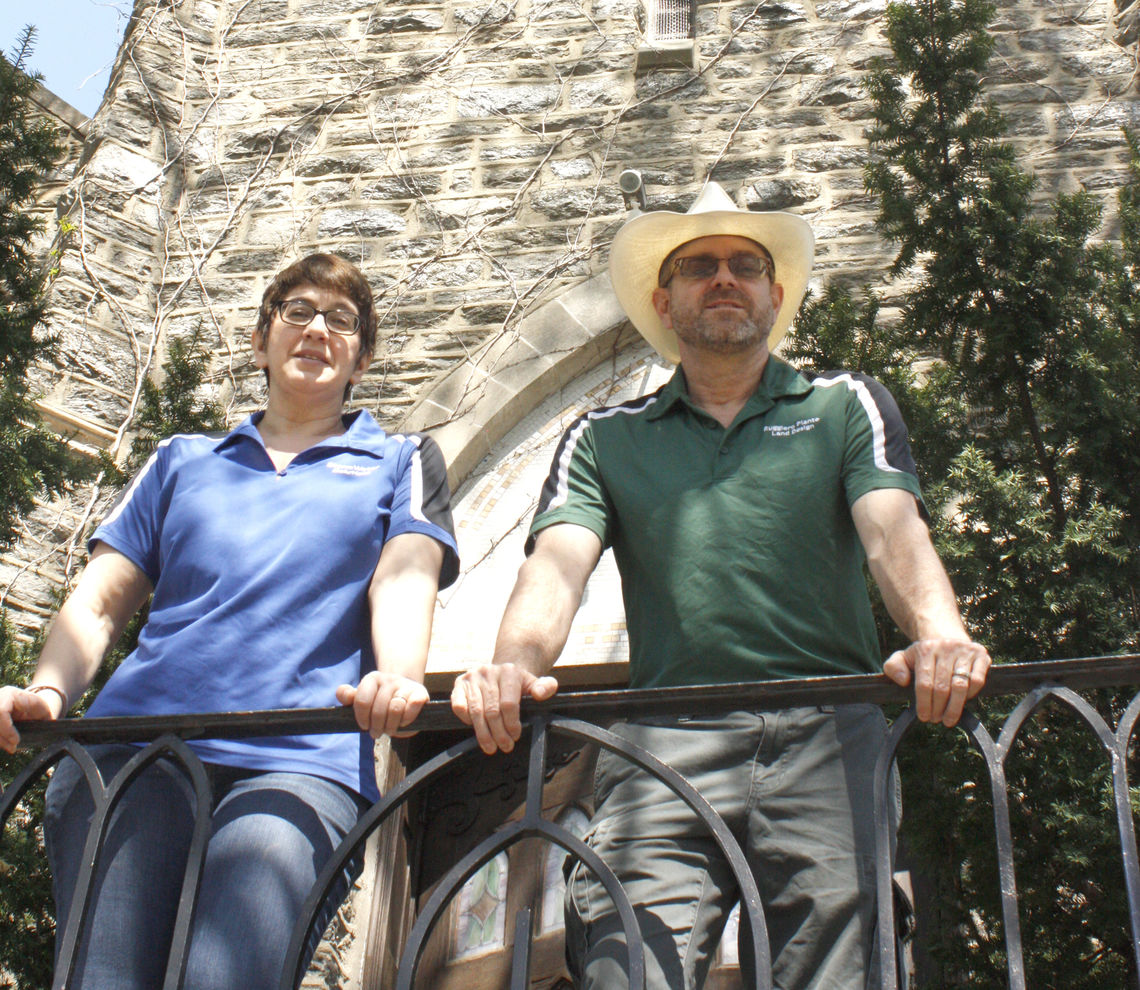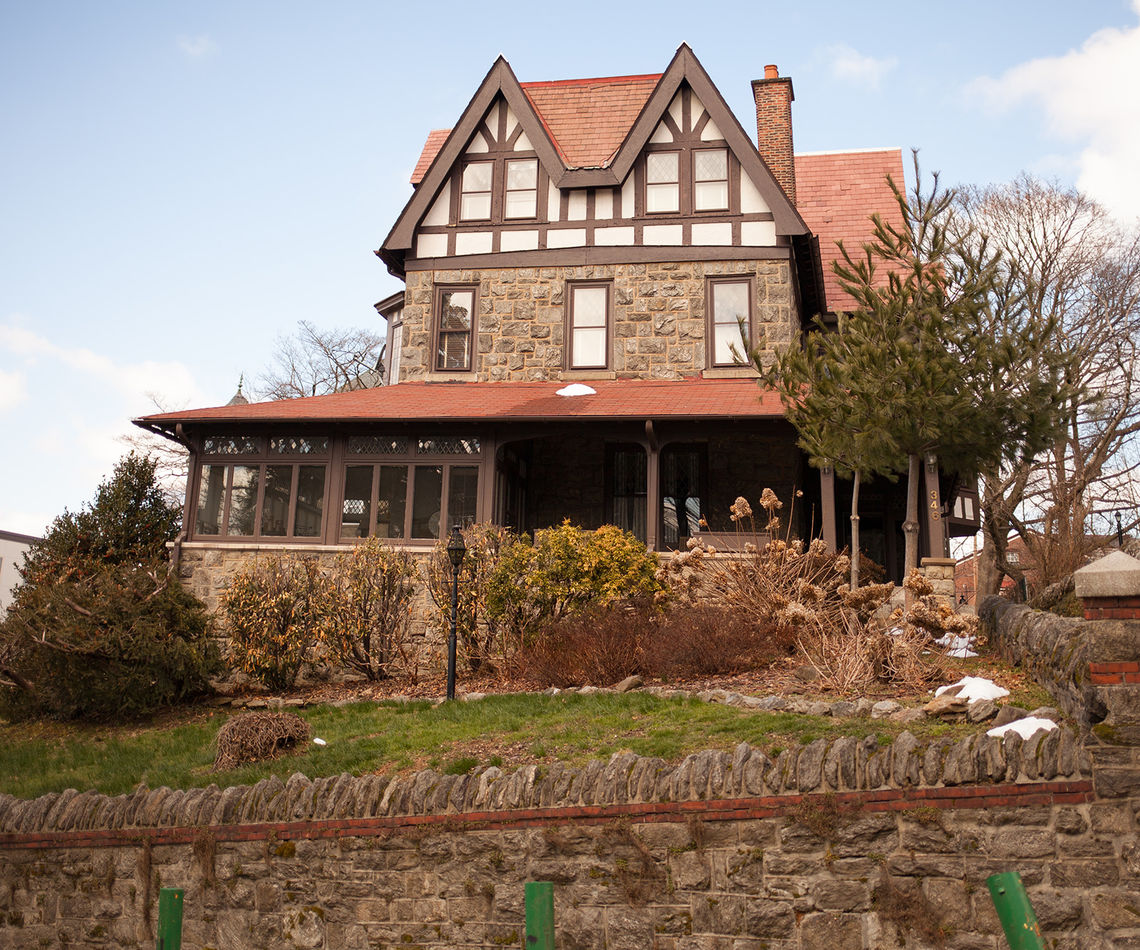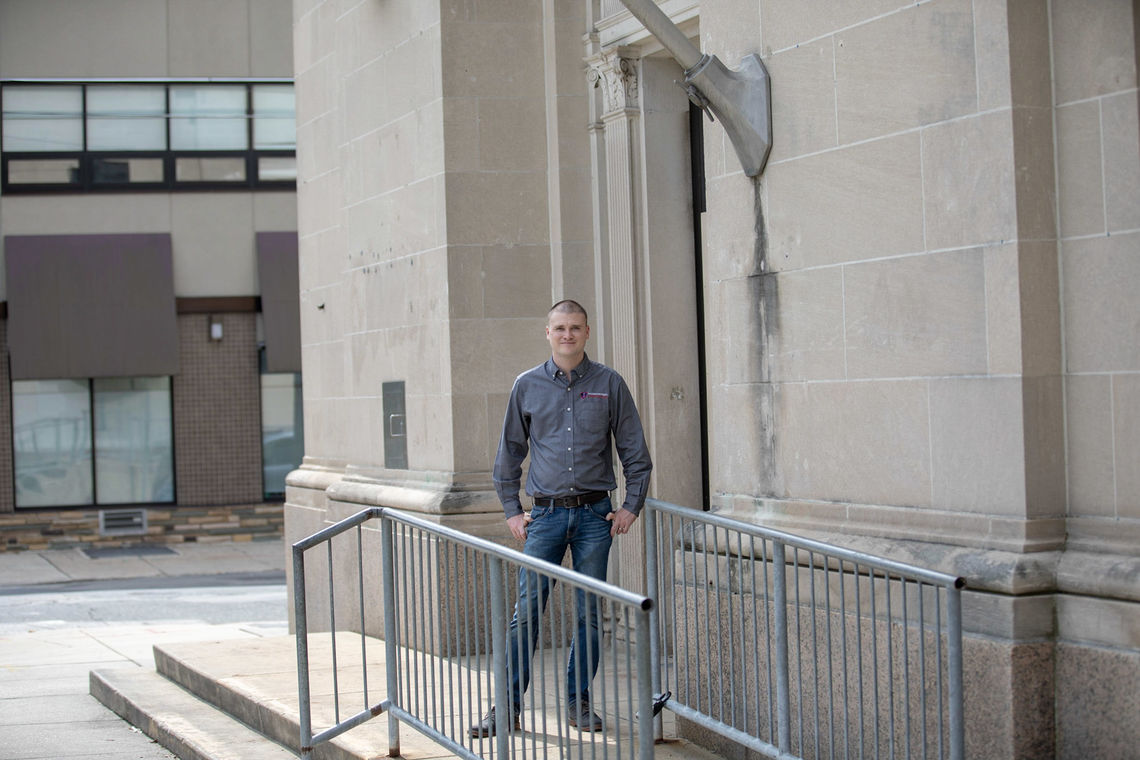
Vaughan Buckley President and Founder of Vaughan Buckley Construction outside the former Roxborough Trust Company Building
The Roxborough Trust Company Building at 6128 Ridge Avenue finds adaptive reuse amid consideration of a Ridge Avenue Historic District.
The old Roxborough Trust Company at Ridge Avenue and Green Lane is the kind of building that wasn’t built with today’s economy in mind. Constructed in 1924 as the headquarters of the trust, the Beaux Arts bank building traded hands several times in its 94 years. It was most recently a Wachovia Bank until that business abandoned the property in 2010.
The Philadelphia Historic Commission protected the building by adding it to its register in 2016. While that protection guaranteed the building wouldn’t be razed, it did not ensure that the building would ever be used. There was practically no chance that it would ever again house a bank, as physical bank locations are becoming less and less important, and certainly smaller format often with drive-throughs.
That’s where Roxborough-based Vaughan Buckley Construction comes in. The 30-year-old Buckley, president and founder of the company, bought the bank building and is in the process of renovating it into a three-story office structure. He needs it, he said, for his growing firm which has grown from three people in 2009 to more than 50 today.
Buckley said he thought he might have to move his growing company out of Roxborough because the neighborhood just didn’t have space to accommodate it, but the bank property made him reconsider.
“I had a look thinking it would not work out for us, but the building is great, with high ceilings and lots of open space. So we came up with a concept design that will convert the space into three levels with 11,000 square feet of office space"
“I had a look thinking it would not work out for us,” he said. “But the building is great, with high ceilings and lots of open space. So we came up with a concept design that will convert the space into three levels with 11,000 square feet of office space.”
Buckley said nearly every other option in Roxborough would have provided him, at best, 2,000 square feet. The bank, which will cost Buckley $2 million between the purchase price and the renovation, is his best bet, he said. Restoring it and keeping it from being demolished is great for the neighborhood as well.
The bank will be his company’s second rehab job -- the firm specializes in modular, new construction, but he’s convinced they’ll do a good job. The company’s first rehab was its current Leverington Street headquarters, which included the rehab of an old home and the construction of a four-unit residential development Leverington Mews
“When we bought [the Leverington] house, it was in danger of being demolished,” he said. “It was a great opportunity for us to rehab it. There was no other choice really for that property. No one was going to buy it who wanted two acres of land. So to get value, it needed to be developed. It’s a similar situation here with bank. We have to find a way to maximize its potential.”
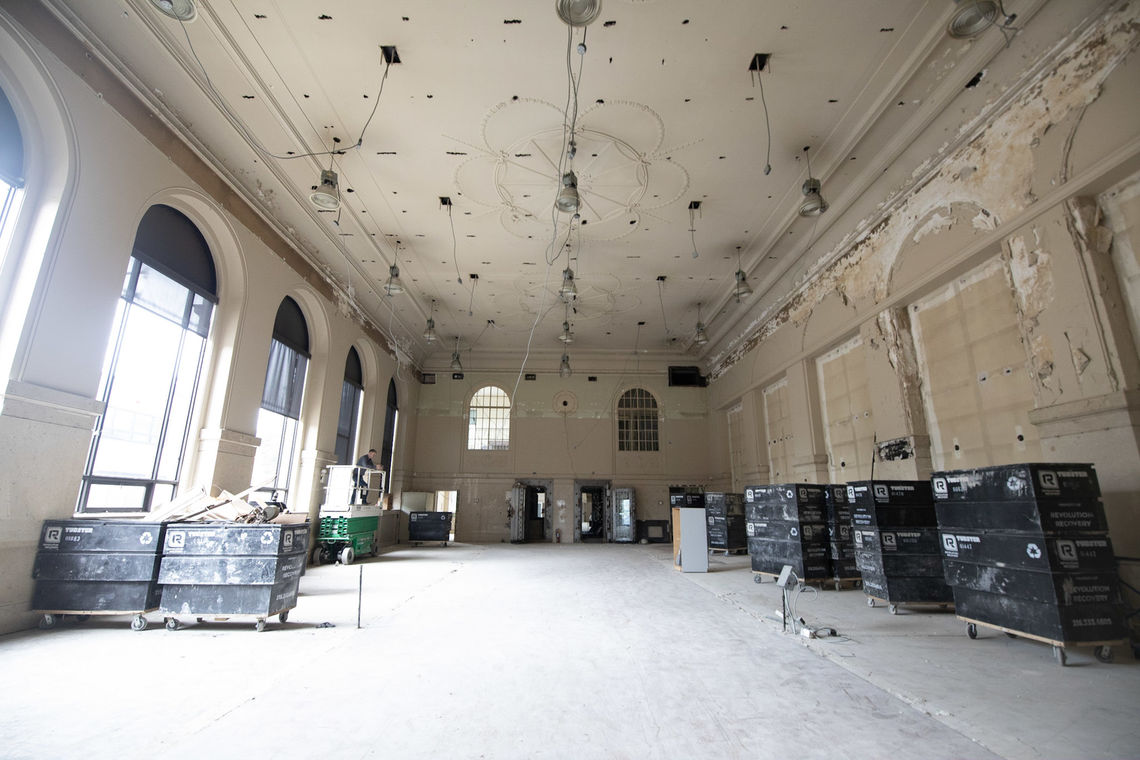
An interior view of the Roxborough Trust Company building at Ridge Avenue and Green Lane
The Ridge Avenue Roxborough Thematic Historic District
But not all buildings have had a similarly successful transition from historic origins to contemporary use. Joshua Cohen, Chief of Staff for Councilman Curtis Jones Jr, whose district includes all of Roxborough, said the councilman’s office began working on preserving the neighborhood’s most notable historic properties after the Bunting House, an 1880s Victorian home at Roxborough and Ridge Avenues, was razed to make way for a Wendy’s restaurant in 2012.
“When that happened, it got everyone’s attention”
“When that happened, it got everyone’s attention,” Cohen said.
Cohen, Curtis and other interested parties including local historic and civic associations, began to study the issue and found that development was really starting to progress in a way that a lot of Roxborough residents weren’t comfortable with.
“The community was seeing older homes torn down and felt they were losing parts of our history,” Cohen said. With the help of the City Planning Commission, a two-part solution to the problem was drawn up. The first part was a year-long moratorium on demolition for all of Ridge Avenue, from its intersection with Manayunk’s Main Street to the city line at Northwestern Avenue. Legislation for the moratorium was approved by City Council in December last year and put into effect.
The second part was the proposal of a Thematic Historic District for Ridge Avenue that would protect 188 properties along Ridge. The theme for the district is a pre-automobile Ridge Avenue. The properties were identified by the Planning Commission and the Philadelphia Historical Commission with help from Curtis’s office and the public.
The thematic district is a rare tool and has been used only one other time in Philadelphia according to Jonathan E. Farnham, Executive Director of the Philadelphia Historical Commission. The other thematic district in the city is based on historic paving and protects more than 200 sections of city streets noted for their historic paving materials, from Belgian blocks to bricks.
Using a thematic district works best for Ridge Avenue, Farnham said, because it allows the city to designate individual buildings and isn’t restricted by geographic boundaries. You can preserve a whole block or a street with a geographical district, but that doesn’t make sense when not all the properties in a geographical location need to be protected.
“We realized many of the properties on Ridge Avenue were either not historic or had been altered so significantly that they were no longer so,”
“We realized many of the properties on Ridge Ave were either not historic or had been altered so significantly that they were no longer so,” Farnham said. “We thought the thematic district was the most efficient way to protect these properties.”
Farnham said the Historical Commission listened to input from residents and government officials and made the final nomination for the 188 properties being considered for the thematic district. Farnham said the theme’s pre-automobile Ridge Avenue represents a time before a major change took place in the neighborhood. That change took place in 1908, he said, when completion of the Walnut Lane Bridge over the Wissahickon opened Roxborough up to automobiles and, as a consequence, large-scale residential development. Prior to that, it was essentially a village with an economy based on agriculture, milling and services for travelers.
That district nomination was put before the commission’s committee on historic designation on September 12 where the public was encouraged to offer input. After being recommended by that committee, the nomination will now go to a meeting of the commissioners on October 12. That meeting is also public. At either stage, the list of properties can be amended. If the commission is satisfied, it could ratify the district at that meeting, protecting all the properties on the list.
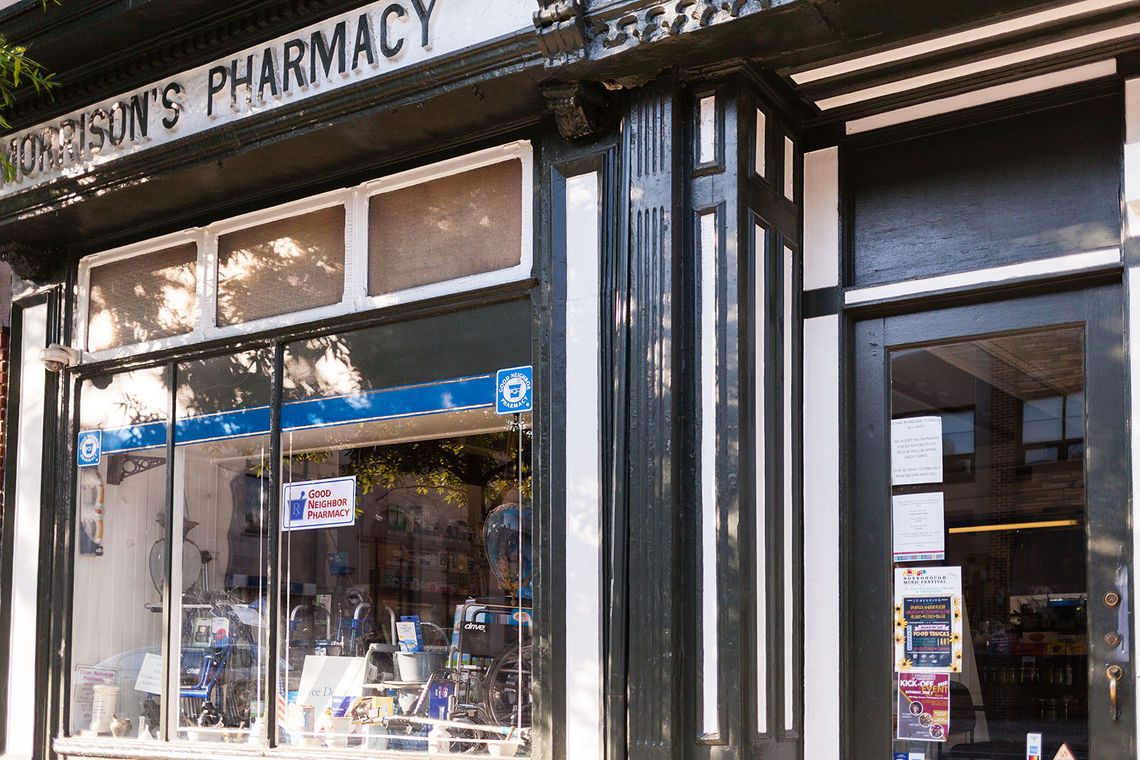
Morrison's Pharmacy established by James Morrison in 1859 is one of 188 properties nominated by the Philadelphia Historical Commission
The Opportunities and Challenges of Historic Preservation
While many residents of Roxborough would consider the thematic district’s ratification a success, there is some concern that it could dampen development in the neighborhood. All properties protected in the district will have design restrictions on what can be done to the properties, including altering facades. Obviously, none would be subject to demolition to make way for fast food restaurants or apartment buildings.
The Roxborough Development Corporation (RDC) which serves as the management association for the Roxborough Business Improvement District (BID) has engaged in the dialogue. James Harry Calamia, the RDC's Executive Director, says 100 of the 188 properties included in the nomination fall within the BID. Following the introduction of the demolition moratorium and the Historical Commission's work to draft a historic nomination, the RDC began working to engage property owners with the Office of Councilman Jones Jr. and the Historical Commission.
"The ways in which we incentivize new construction and historic preservation are out of balance city-wide," Calamia said. "As we have heard from our member property owners, to value our historic assets as competitive advantages we need to identify solutions and reforms that will encourage preservation and not just require it.”
As part of a dialogue around historic preservation, the RDC has focused their efforts on identifying historic renovation financial incentives, reviewing new construction development standards and communicating with owners whose properties have been nominated. Part of this conversation has included reexamining existing zoning standards for Ridge Avenue to encourage the adaptive reuse of properties currently nominated along Ridge Avenue.
Buckley noted that as a developer with a lot of experience in the city, he was confident he could work within historic guidelines but was concerned other developers might not want to tackle projects in the neighborhood like his rehab of the Roxborough Trust Company property. He said he would like to see the public be more proactive in the future, working towards identifying development they’d like to see rather than just getting active to fight development for the sake of preventing it.
“It’s a challenge we have to address, but it’s never going to stop,” he said of the pressures to develop. “The best use for any property will always change. The Planning Commission has done a good job with rezoning Ridge to ensure the highest and best use is also appropriate. But community engagement on what they want to see happen on Ridge is more important than on what they don’t want.”
For more information on the Ridge Avenue Roxborough Thematic Historic District click here
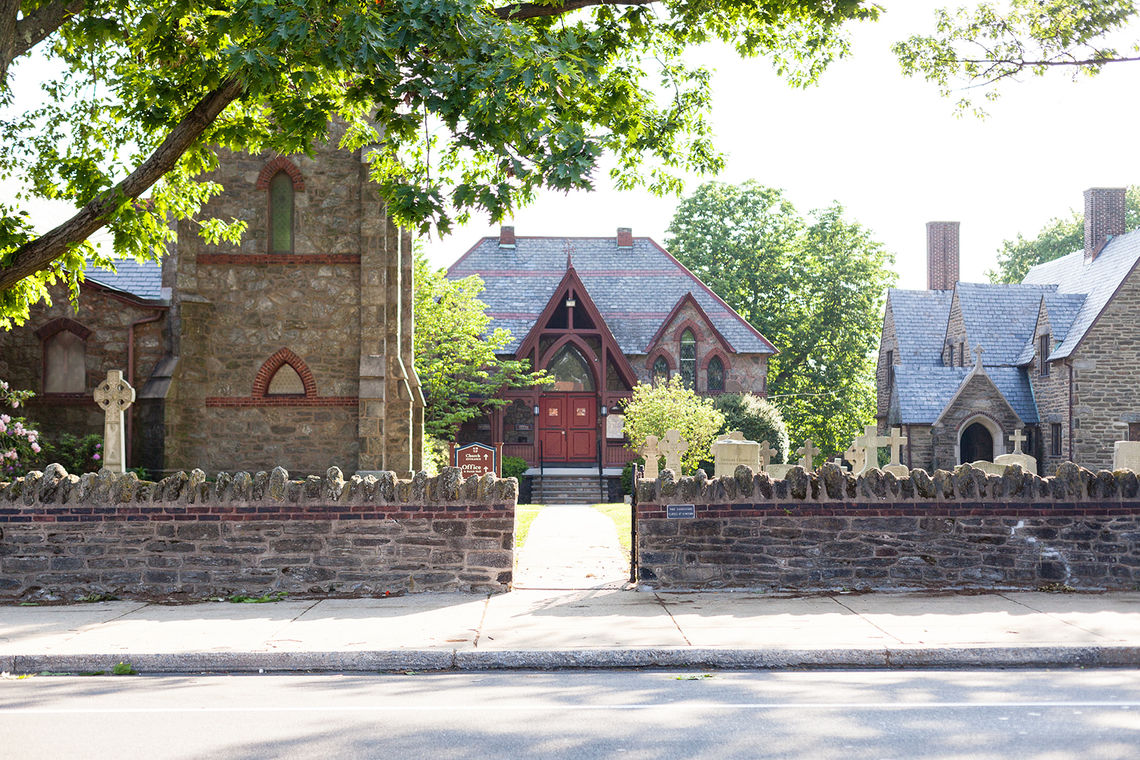
St. Timothy's Episcopal Church built in 1862 is one of 188 properties designated by the Philadelphia Historical Commission
